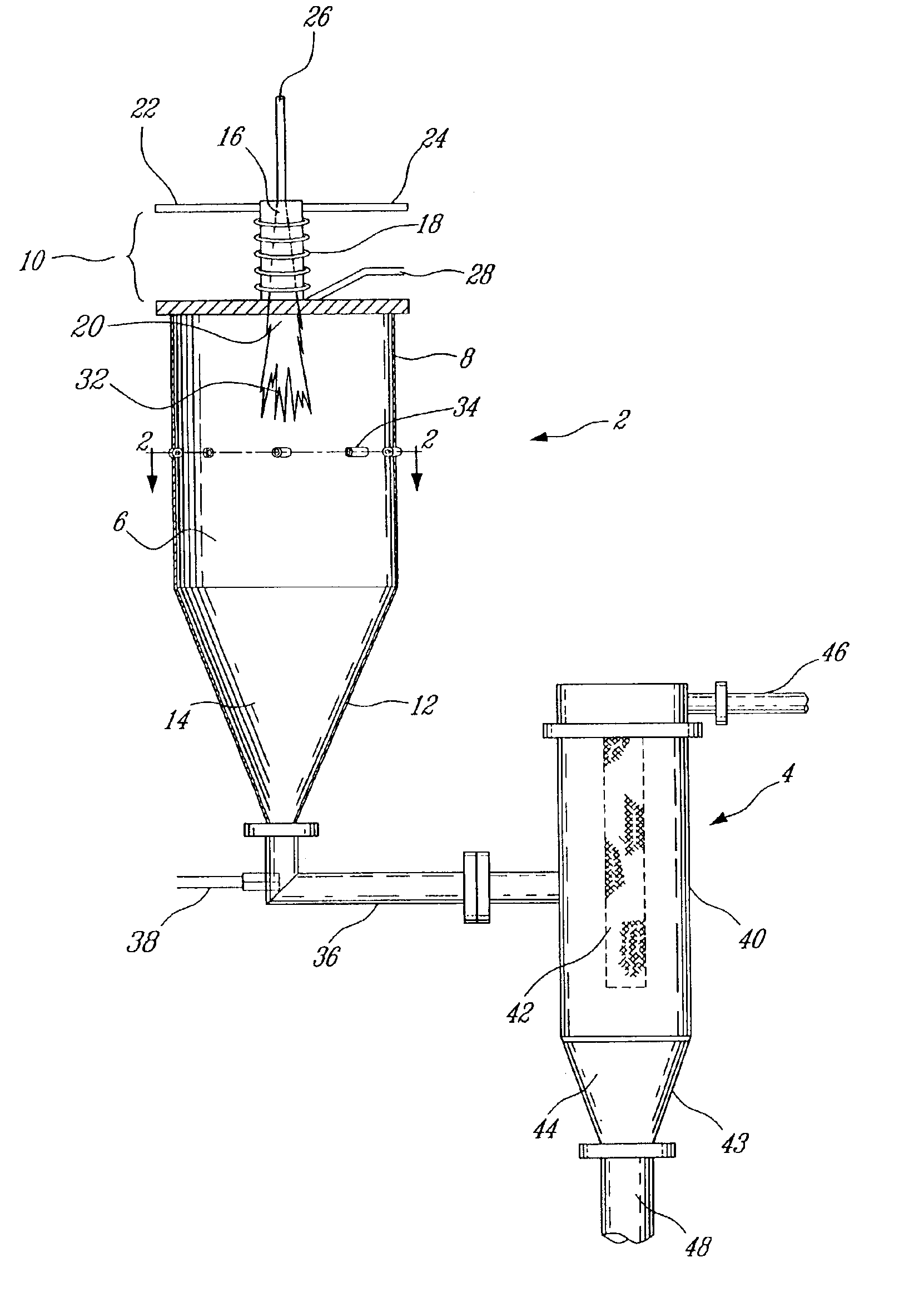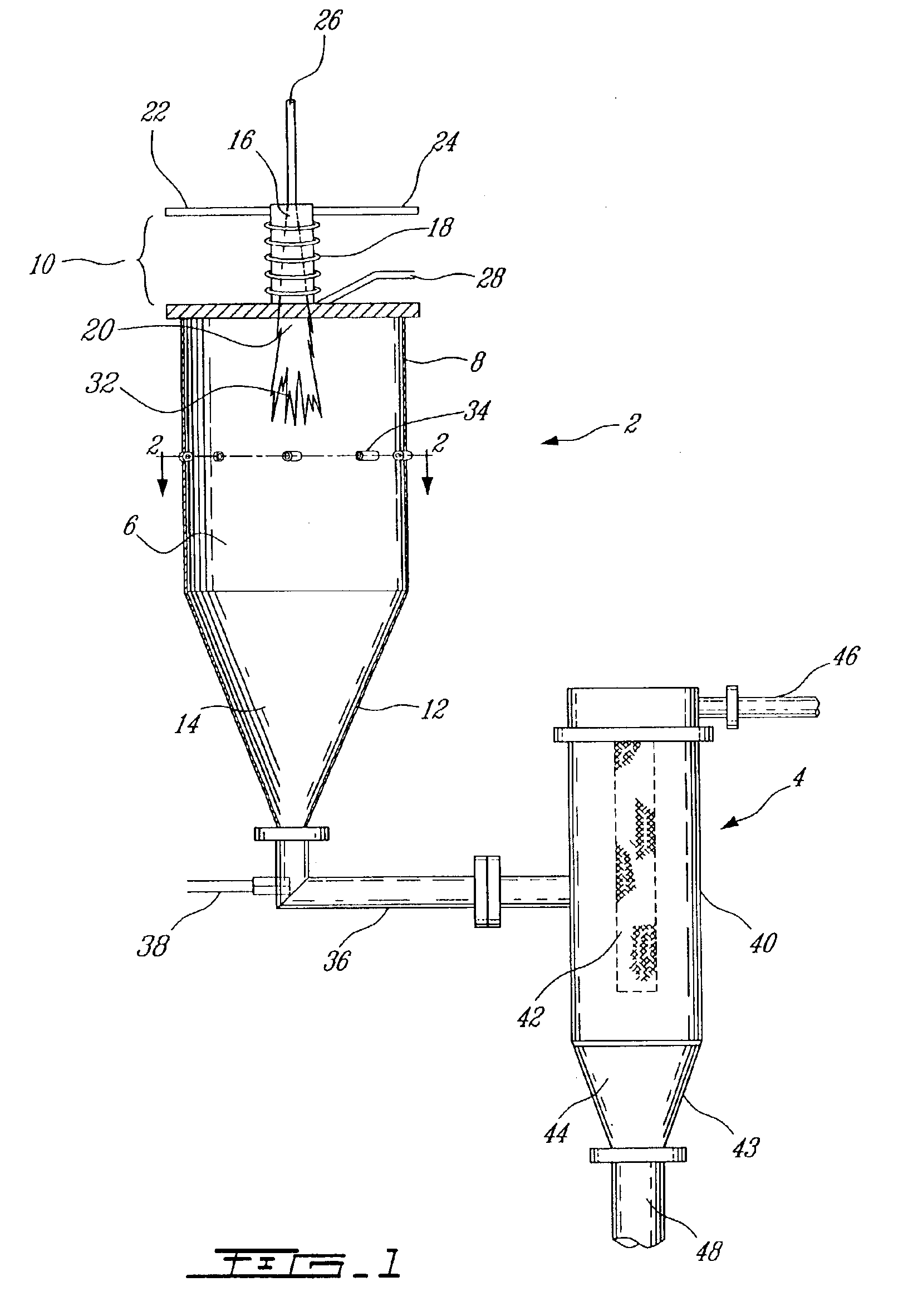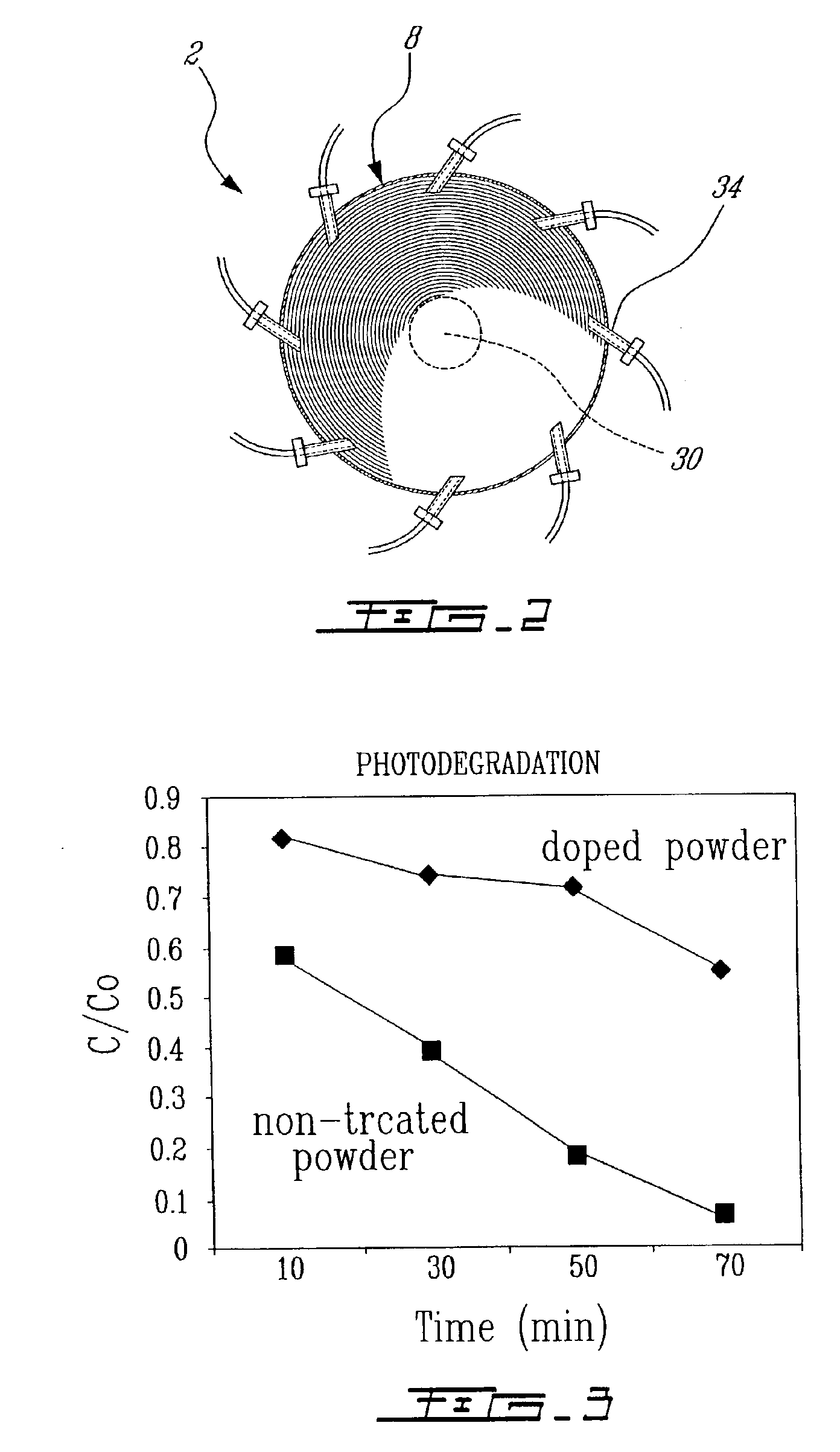Plasma synthesis of metal oxide nanopowder and apparatus therefor
a metal oxide and nanopowder technology, applied in the direction of metal/metal-oxide/metal-hydroxide catalysts, physical/chemical process catalysts, etc., can solve the problems of low refractive index of titanium dioxide, less desirable coating pigment, and very delicate process for spinning fibres, etc., to achieve long residence time in the reactor and large volume discharge
- Summary
- Abstract
- Description
- Claims
- Application Information
AI Technical Summary
Benefits of technology
Problems solved by technology
Method used
Image
Examples
Embodiment Construction
[0060]According to an illustrative embodiment of the present invention, titanium dioxide nanopowder is manufactured by heating titanium tetrachloride to a reaction temperature using an induction plasma, reacting the obtained titanium tetrachloride vapour with an oxidizing gas to form titanium dioxide vapour and rapidly cooling the titanium dioxide vapour to promote homogeneous nucleation of a fine aerosol and stop the growth process of the resulting particles.
[0061]Referring now to the drawings, FIG. 1 illustrates a reactor 2 and a filter unit 4. The reactor 2 includes a sealed reaction chamber 6 comprising a vertically disposed generally tubular chamber section 8 closed at the upper end by an induction plasma jet assembly 10. The sealed reaction chamber 6 also comprises a taper chamber section 12 integrally mounted to the vertically disposed generally tubular section 8 at the lower end thereof. This taper chamber section 12 defines a region 14 for receiving titanium dioxide nanopow...
PUM
| Property | Measurement | Unit |
|---|---|---|
| temperature | aaaaa | aaaaa |
| temperature | aaaaa | aaaaa |
| power level | aaaaa | aaaaa |
Abstract
Description
Claims
Application Information
 Login to View More
Login to View More - R&D
- Intellectual Property
- Life Sciences
- Materials
- Tech Scout
- Unparalleled Data Quality
- Higher Quality Content
- 60% Fewer Hallucinations
Browse by: Latest US Patents, China's latest patents, Technical Efficacy Thesaurus, Application Domain, Technology Topic, Popular Technical Reports.
© 2025 PatSnap. All rights reserved.Legal|Privacy policy|Modern Slavery Act Transparency Statement|Sitemap|About US| Contact US: help@patsnap.com



